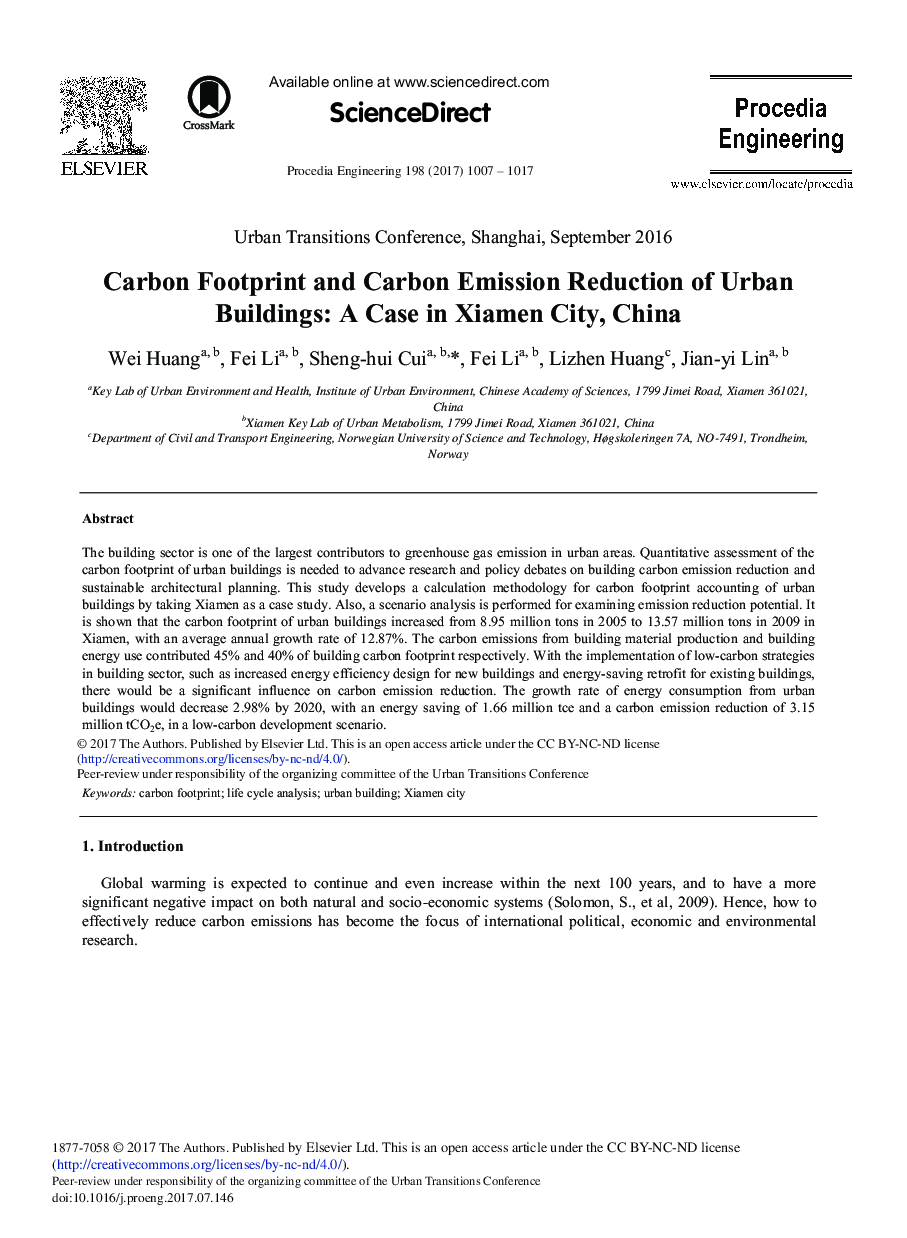| Article ID | Journal | Published Year | Pages | File Type |
|---|---|---|---|---|
| 5027457 | Procedia Engineering | 2017 | 11 Pages |
Abstract
The building sector is one of the largest contributors to greenhouse gas emission in urban areas. Quantitative assessment of the carbon footprint of urban buildings is needed to advance research and policy debates on building carbon emission reduction and sustainable architectural planning. This study develops a calculation methodology for carbon footprint accounting of urban buildings by taking Xiamen as a case study. Also, a scenario analysis is performed for examining emission reduction potential. It is shown that the carbon footprint of urban buildings increased from 8.95 million tons in 2005 to 13.57 million tons in 2009 in Xiamen, with an average annual growth rate of 12.87%. The carbon emissions from building material production and building energy use contributed 45% and 40% of building carbon footprint respectively. With the implementation of low-carbon strategies in building sector, such as increased energy efficiency design for new buildings and energy-saving retrofit for existing buildings, there would be a significant influence on carbon emission reduction. The growth rate of energy consumption from urban buildings would decrease 2.98% by 2020, with an energy saving of 1.66 million tce and a carbon emission reduction of 3.15 million tCO2e, in a low-carbon development scenario.
Related Topics
Physical Sciences and Engineering
Engineering
Engineering (General)
Authors
Wei Huang, Fei Li, Sheng-hui Cui, Fei Li, Lizhen Huang, Jian-yi Lin,
